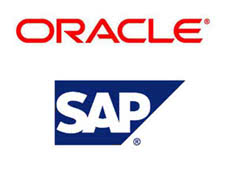SaaS
From the Community: What are the Disadvantages of SaaS Solutions?

We all like to talk about how great the cloud and cloud hosting is, and it’s been a big buzzword for several years, but very few articles and posts go into detail on the possible downsides. It’s not that there aren’t any downsides—it just seems that very few are inclined to talk about the potential shortcomings when it’s so much easier to repeat why something is so great.
This question from our very own community got me thinking more about what the actual disadvantages of SaaS solutions because nothing is 100 percent awesome and free of drawbacks. While all of the things on this list may or may not be relevant to your business and the way in which you use SaaS technology, they’re still worth being aware of as you implement more and more SaaS solutions.
The Disadvantages of SaaS Solutions
1) Uptime and Accessibility
This is one of the disadvantages of SaaS that we’re hearing more and more about, especially when it’s Google and Amazon who are experiencing issues. If your company is subscribed to either of those company’s services, then no doubt you’ve experienced outages and downtime at least once or twice in the past year. If your cloud servers go down, then you can’t access anything; and if your operations absolutely depend on 100 percent uptime, then you could be looking at some serious issues down the line. If you’re subscribing to a SaaS solution, that’s why paying attention to the vendor’s SLA (service level agreement) is so important.
2) Distant servers make a difference in connectivity.
We tend to think that if something is in the cloud, then you can access it easily no matter where you are; and while this is true to an extent, the distance between you and your servers actually does impact your connectivity. For example, if your cloud servers are in another state (or even in another country) you could end up with high latency (i.e. the time it takes for a request to be sent to the server, be acknowledged, and then return back to you). Not only that, but if the server that you’re accessing suddenly sees a surge in activity, then that will also increase your latency, leading to long loading times.
3) Data Lock-in
If the SaaS solution you’re using has proprietary software, you could be looking at data lock-in issues. This means that if you want to transfer your information to another service, the vendor could prevent you from taking all your data with you. Unfortunately, there’s generally not much that you can do after the fact because most vendors will ensure that the data lock-in caveat is included somewhere in their User Agreement, and we all know how carefully we read those when signing up for new services. This disadvantage of SaaS is definitely an argument for paying attention to the fine print.
4) Difficulty in Massive Data Uploads
If your company has a ton of data to transfer (we’re talking in the hundreds of gigabytes or more), then it could take an incredibly long time to upload all of that information into your cloud servers. Without extremely high bandwidth and data connections, then you’re looking at several days of work just trying to upload all of your information. It’s a definite headache in the shortrun, so you might want to investigate boosting your data connection if you anticipate needing to upload a great deal of data to your new SaaS solution.
5) SaaS is Not a Silver Bullet
Some companies make the move to SaaS thinking that it will be the key to streamlining all their business processes, but you also have to consider whether the solution actually does everything that you need it to do. Businesses are so tempted by the low rates, ease of access, and exciting demos that sometimes the decision-makers don’t actually think about the practicalities of implementing this new solution across their organization. Just because it’s in the cloud doesn’t mean that it will serve your business better than an on-premise solution; and a great many SaaS solutions don’t serve a wide range of verticals, thus limiting their functionality for certain types of businesses.
6) Hidden Costs of SaaS
We went into a little more detail about the hidden costs of the cloud previously, and it’s definitely a potential disadvantage of SaaS depending on what types of solutions you’re signing up for. Many companies don’t realize that the cost of SaaS doesn’t necessarily end with your monthly bill. The vendor might also charge you for support, setup, training, add-on applications, integration with other services, and the list goes on. Although upgrading on-premise solutions can be a hassle, they’re generally a one-time payment, and then you own the software. Not so with SaaS–you’ll be paying that fee forever, and you may see additional fees depending on how you decide to use the service.
Bottom Line on the Disadvantages of SaaS
As I mentioned above, some of these issues may mean nothing to you depending on what kind of SaaS solutions you’re looking at, but the majority are still potential flaws that all businesses should be aware of when shopping around for new services. These aren’t prohibitive drawbacks most of the time, but it always helps to be a little more informed on emerging technologies such as this.
Looking for more information on SaaS solutions? Try taking a look at our exclusive report comparing 10 of the top cloud hosting platforms.





